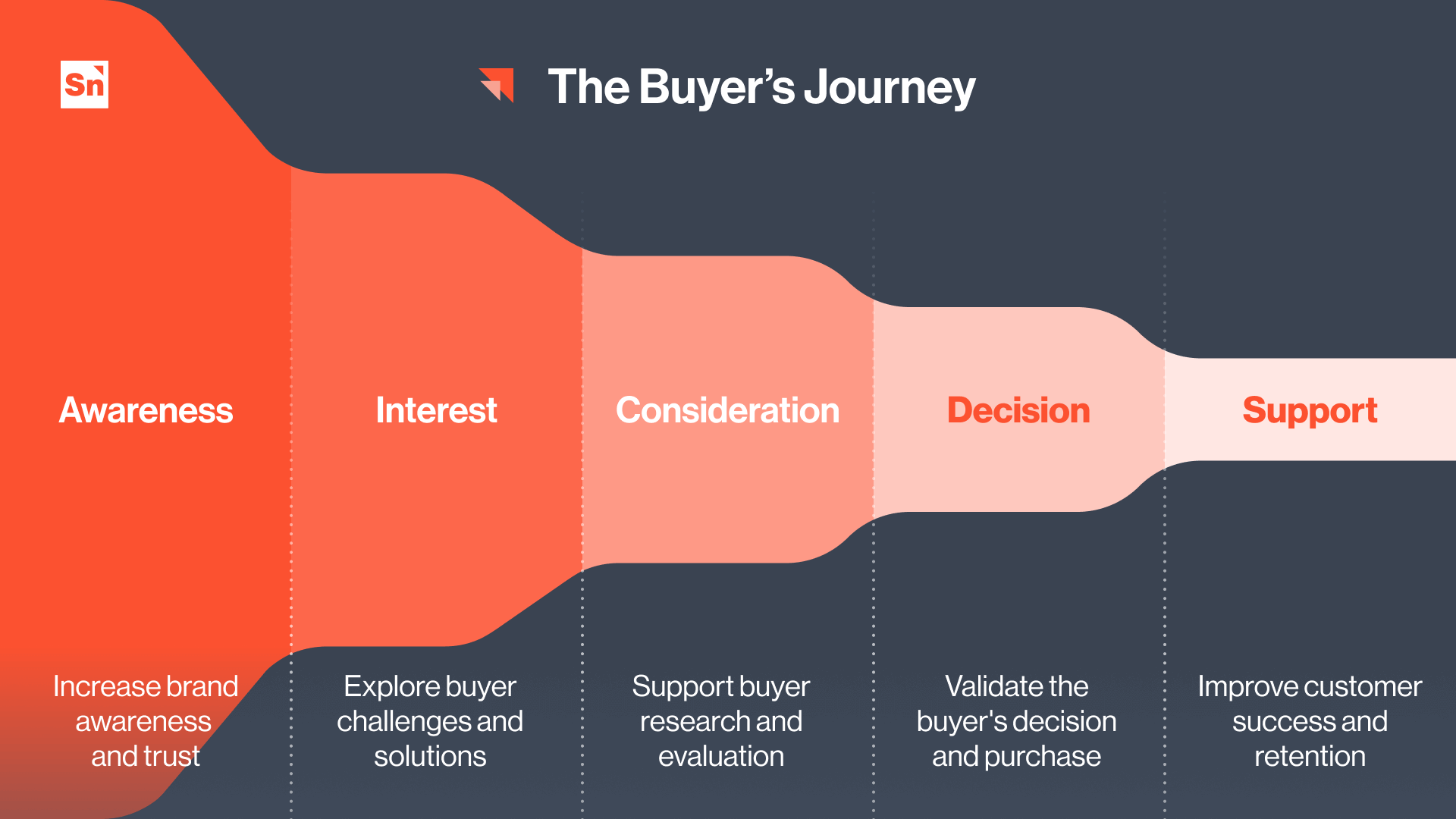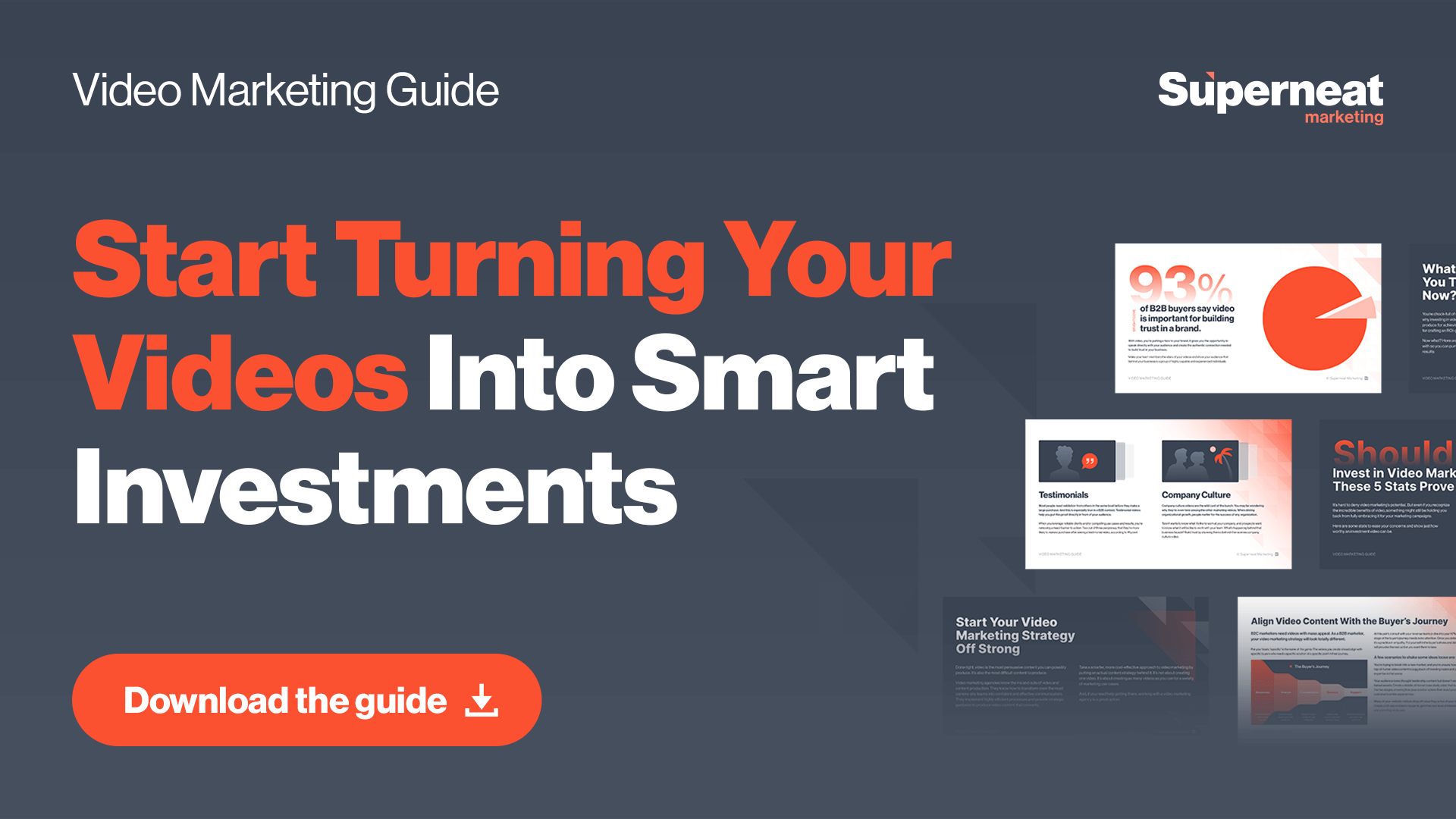Once upon a time in the golden era of content marketing, sharing a blog or website link on social media would gloriously flood your site with referral traffic. Prioritizing SEO and dutifully publishing blog posts used to consistently deliver organic traffic from Google.
If you’ve been wondering why your website traffic and content results have gone down the sh*tter, you’re not hallucinating. The times they are a-changin’.
These platforms that we thought were our friends got greedier and greedier and started hoarding traffic all for themselves.
- 59% of Google searches in the US and EU end without a click.
- The 30% of searches that end with a click go to Google-owned properties, like YouTube.
But, it’s not just the platforms…people’s clicking behaviors have changed too. We just don’t like to click as much as we used to. We want to see the information right then and there.
I don’t say all of this to scare you. I say this to nudge you out of your comfort zone so you don’t expect miracles to happen with outdated content strategies. Instead, I recommend adopting this new mindset…
Zero-click content.
What Is Zero-Click Content?
Zero-click content is instantly valuable content. There’s no click-bait title to hard-sell someone into taking a clickable action. There are no hoops for your audience to jump through so they get to the good stuff.
It’s all right there in front of them—immediate engagement happens when you provide instantly valuable content.
Amanda Natividad at SparkToro first coined the term zero-click content. This strategy focuses on providing value directly within the platform so your audience gets what they need without ever having to click through to another site.
Even though we didn’t have a cool term for it at Superneat, we’ve been heading in this direction for several years.
On LinkedIn, we’ve been die-hards about making sure our clients post videos directly to the platform instead of sharing YouTube links. After running some experiments, we found that sharing the video directly on LinkedIn always outperformed any posts with YouTube links.
Even if you didn’t know the zero-click content term before, chances are you’re aware of the changing situation in content marketing. You probably recognized traffic and results declining and you’re trying to do something about it. But, what?
How do we succeed now that so much has changed? What do we need to stop doing and start doing?
The Zero-Click Mindset: What to Stop and What to Start
To get into the zero-click swing of things, take a much-needed moment to reevaluate your current strategies. Warning: This is going to require a pretty significant mindset switch, especially if you’ve been doing content marketing a certain way for a very long time.
Stop: Spraying and Praying Across Every Possible Channel
Start: Doing Research to See Where Your Audience Will Engage
Instead of spreading your content marketing efforts across numerous channels, take the time to understand where your audience is and where they are more likely to engage.
Conduct audience research to gather data on your audience’s habits. What are the websites and platforms where they prefer to hang out?
When you know where your audience spends their time, you’ll suddenly be able to tailor content to fit the platform’s unique style and your audience’s expectations. This targeted content leads to higher engagement and more meaningful interactions.
Referencing this unbeatable data will help you create more audience-specific content that hits the mark every time. Without this knowledge, you’re just spraying and praying—a tactic that no longer works in our digitally saturated world.
Stop: Relying Completely on SEO
Start: Diversifying With Zero-Click Opportunities
There’s been a lot of commotion about AI being the death of SEO. AI has definitely disrupted SEO, but it hasn’t killed it.
Zero-click searches have been contributing to a decline in traffic since searchers can get the information they need right on the search page without clicking. Think: Featured snippets and People Also Ask.
The big culprit now is you’re competing with AI.
Google has its own strong AI agenda, which is why they’re providing AI overviews at the very top of the SERP. The flood of generic AI content from brands and publications has harmed those of us creating original, experiential content. Google has been doing funky things with page indexing, and overall, the digital world is noisier than ever before.
Additionally, people’s search habits are changing—before they only had Google search and now they have AI tools. On top of all that, as I mentioned earlier, people’s click habits have changed too.
While SEO is still important, don’t put all your eggs in that basket. Invest in social-first and video-first content strategies as well. You cannot ignore social media platforms or YouTube anymore. People are on these platforms and they’re consuming content, especially zero-click content.
Stop: Making Your Blog the #1 Priority
Start: Making YouTube Your #1 Priority
Given the dominance of video content and the fact that nearly 30% of Google searches end on YouTube, it’s time to shift your focus away from the blog a wee bit. Don’t go overboard and get rid of your blog—it still has a place.
Remember that SEO is not dead, plus your blog will effectively demonstrate your team’s experience and expertise to website visitors. Your blog still serves a greater purpose when those visitors are potential customers meandering on your website. Your blog is valuable for building brand loyalty as well as guiding people through the buyer’s journey.

Keep the blog, but prioritize your YouTube presence. This platform not only enhances visibility but also aligns with zero-click content strategies. It’s a wonderful place to build your brand and build credibility with your audience.
If you’re new to YouTube, here’s how to optimize your YouTube channel and videos to maximize the effectiveness of this channel.
Stop: Focusing Only on Written Content
Start: Creating a Video-Led Content Strategy
Among the various forms of zero-click content, video is the most powerful player. Videos convey complex information in a short amount of time, so they pack a lot of punch when you need to communicate with your audience right then and there.
Platforms like YouTube dominate search results, capturing a significant share of zero-click searches. As more users turn to video for quick answers and tutorials, adding video content to your strategy is no longer optional.
Videos are more likely to be featured in search results and shared across social media. Video has the most positive ROI impact over any other type of content—including written-only, but also audio and graphic formats.
Develop a comprehensive video-led content strategy that includes thought leadership, podcasts, and testimonials alongside more brand and product-focused videos.
Make sure that each video:
- Serves a business purpose.
- Meets your audience on the channels where they are most active.
- Engages, educates, and entertains.
Stop: Sharing Blog Links on LinkedIn
Start: Carving Up and Repurposing Blogs
You can get so much more mileage out of your long-form blog content on LinkedIn by carving it up into bite-sized formats.
Instead of simply posting blog links, use text posts, infographics, and carousel posts to share valuable insights directly with your LinkedIn audience. This approach improves engagement since the LinkedIn algorithm favors linkless posts.
Repurposing your blog content into a LinkedIn newsletter is another good move. It will get more eyes on the content you worked so hard to create, especially if you’re struggling to get people to come to your blog amidst the great decline in referral traffic.
LinkedIn newsletters allow you to grow your following and build more connections on LinkedIn. You’re accessing an audience who may be less likely to subscribe to your blog newsletter because they prefer to hang out on LinkedIn instead.
By breaking down and spinning up your blogs in new ways, you can capture attention quickly and encourage interaction. And you don’t have to focus so much energy coercing your audience into leaving the platform.
Stop: Underestimating the Power of Visuals
Start: Investing in High-Quality Visuals
Novella-length text-only content is popular on LinkedIn, so it has its place. However, strong visuals make your zero-click content more eye-catching and memorable. DIY graphics in Canva by people without graphic design chops don’t count. Invest in creating high-quality infographics and graphics if you want to win people’s attention.
Video is definitely worth mentioning again. It’s visual and dynamic.
I’ll share the same word of caution here: DIY videos are everywhere in B2B right now, and the content quality is subpar.
I understand that it may seem more economical to wing it with your webcam or smartphone, but it’s not a good look for your brand and your audience expects more. Invest in high-quality videos too.
Stop Outdated Content Marketing Practices
By stopping outdated practices and starting new effective strategies like zero-click content, you’ll make way more progress with your content marketing efforts.
Zero-click content is your best bet to stay relevant and keep your audience engaged. By meeting them where they are and delivering instant value, you’ll build stronger connections and make sure your message clicks without relying so much on click-throughs.
To be clear…zero-click content doesn’t mean you should never share links.
This approach encourages you to think outside the box and think more about delivering instant value through your content. Focus on where your audience is, diversify your content formats, and prioritize video to stay ahead.
